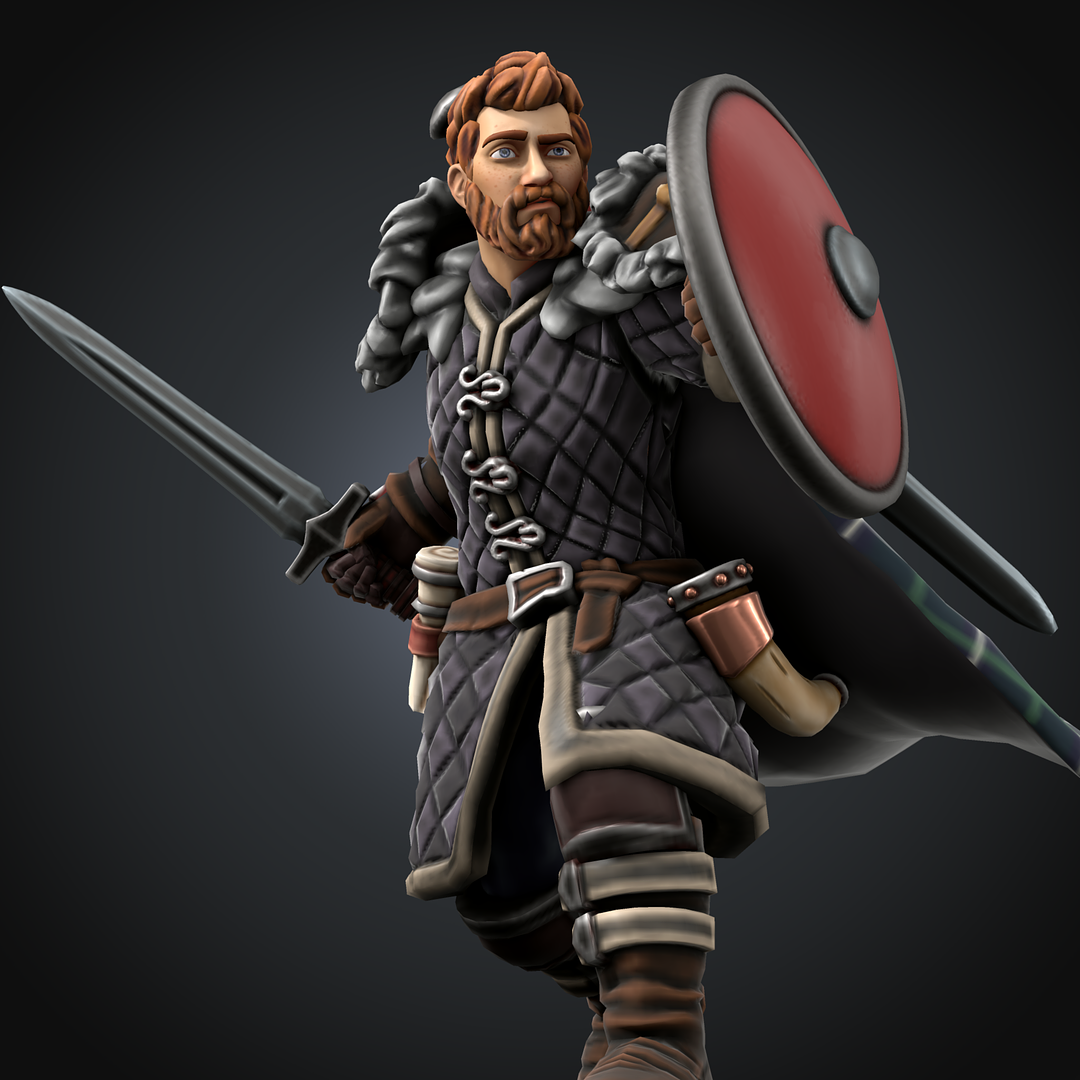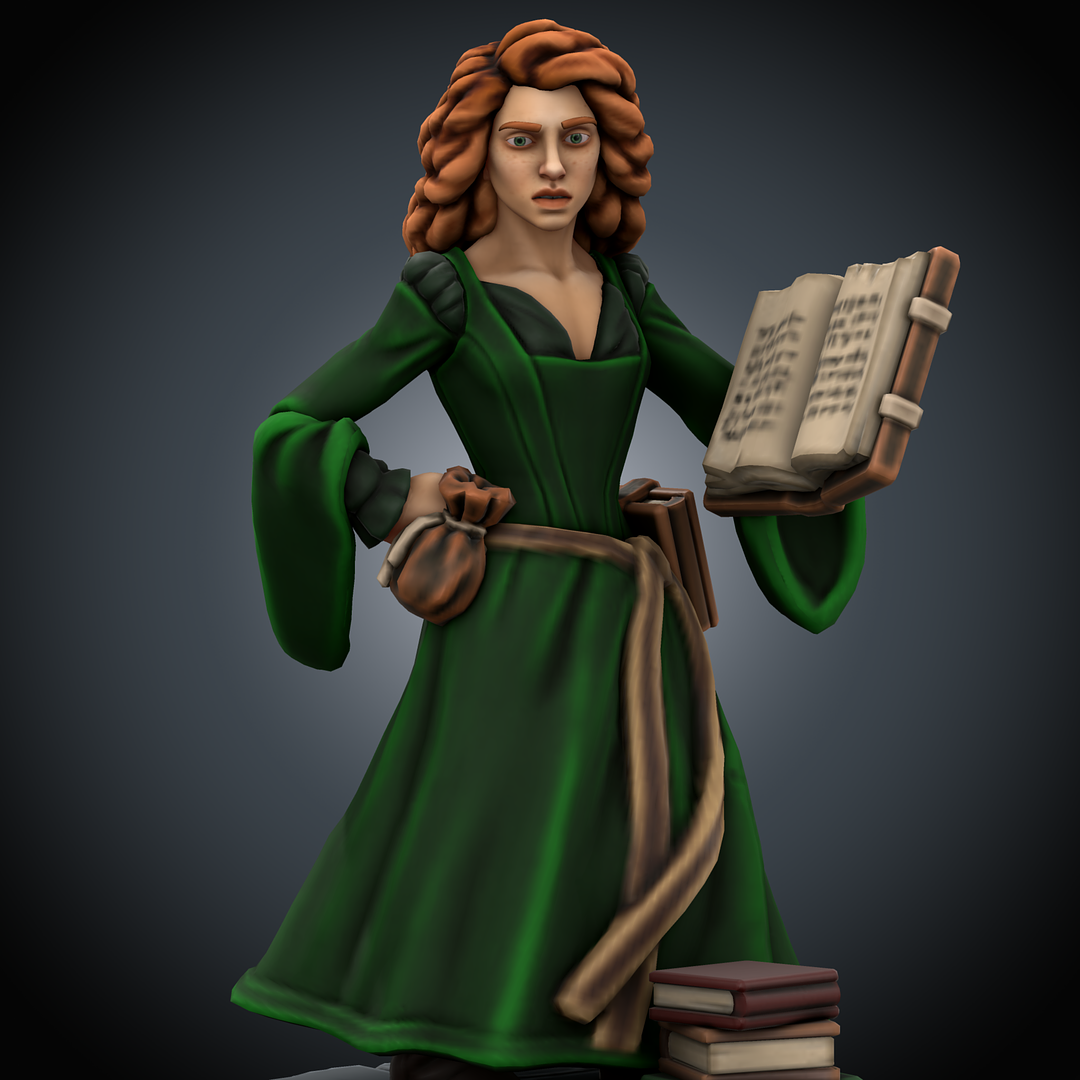106
Tabletop Design - The Senet House / Dwarf Gothic
« on: April 22, 2023, 11:38:33 PM »
This is really a TTRPG (or possibly boardgame, or computer game, who knows, though I think my first envisioning of it was TTRPG so it's going here) setting idea without anything attached to it yet, and I don't know if I'll use it for anything, but here's the pitch for my own notes as much as anything, thoughts welcome!
Humans have dominated Hovaz for many years. Their empires held sway upon the surface, and even into the high mountains and deep woods their fires burned. In among them, dwarfs were little communities of tinkers, who were spat upon, moved with their masters, and perhaps sometimes told stories of half-remembered times when they held their own halls deep beneath the high hills: but these they told only to themselves.
But now the world is fracturing: the exhaustions of war have caused the world to creak at the seams, caused corruption and banditry to spread across the fields and the lowlands. Muskets are being used as clubs because of the scarcity of gunpowder, and the depradations of war are causing spirits to stir that should not have been awoken. And little by little, the dwarfs built spaces for themselves: little places and times where they found that they could take time and space for themselves. And so they met, and so they told their stories of half-remembered times, and so they took their tinkerings and tales and they made of them... something new.
The world is fracturing, and it may be up to the once-humbled dwarfs to decide what sort of age the future will be. Inventions built as a way of opting out of a breaking society might now be needed to save it, or complete its destruction. How will mankind react to the heavy tread of golems and the rattle of carts along the dwarfs' new iron roads? Will the dwarfs manage to bring torches back to long-empty halls, and will what they build there be a rebirth of tradition or something entirely new to shape a different sort of existence altogether?
Will the dwarfs be able to deal with the monsters that lurk in the shadows? What about the ones that lurk within themselves?
There's various ideas I'm batting around with for this. One core premise is sort of exploring what happens when people who've formerly been oppressed find they can turn the tables: it's not really an industrial revolution story in my mind, and I think I want to keep the dwarfs' technology quite artisanal. But I think focusing on problems like "Well all our stories from 400 years ago say X, now we actually get to decide on that, are we going back to that? Do we trust these stories, and who are we if we don't?" is quite an interesting one re playing with shaping belief. And I think putting it from the Dwarfs' perspective makes it a potentially hopeful setting: the world is being reshaped anyway, it can't be "defended" or "protected", it's just about deciding what sort of world it will become.
I think it also works aesthetically in my head. Like, I sort of imagine the movie trailer for this involving a caravan of bicorne-hatted or floppy-hatted dwarfs edging nervously through a forest, perhaps with a golem-pulled cart or early steam engine, with human bandits with rusty swords watching from the shadows - and then as night falls, both the humans and dwarfs find themselves losing members of their party to an unseen assailant. Or possibly a scenario with dwarfs returning to a mine mentioned in their songs and finding humans living in the upper caves who've actually now been there for several generations: how do you deal with that? Who has what rights? Are you coming to put a king back on a mountain throne, or do you find new compromises and ideas?
Anyway, just something I've been mulling over. We'll see if I add any more thoughts to it!
Humans have dominated Hovaz for many years. Their empires held sway upon the surface, and even into the high mountains and deep woods their fires burned. In among them, dwarfs were little communities of tinkers, who were spat upon, moved with their masters, and perhaps sometimes told stories of half-remembered times when they held their own halls deep beneath the high hills: but these they told only to themselves.
But now the world is fracturing: the exhaustions of war have caused the world to creak at the seams, caused corruption and banditry to spread across the fields and the lowlands. Muskets are being used as clubs because of the scarcity of gunpowder, and the depradations of war are causing spirits to stir that should not have been awoken. And little by little, the dwarfs built spaces for themselves: little places and times where they found that they could take time and space for themselves. And so they met, and so they told their stories of half-remembered times, and so they took their tinkerings and tales and they made of them... something new.
The world is fracturing, and it may be up to the once-humbled dwarfs to decide what sort of age the future will be. Inventions built as a way of opting out of a breaking society might now be needed to save it, or complete its destruction. How will mankind react to the heavy tread of golems and the rattle of carts along the dwarfs' new iron roads? Will the dwarfs manage to bring torches back to long-empty halls, and will what they build there be a rebirth of tradition or something entirely new to shape a different sort of existence altogether?
Will the dwarfs be able to deal with the monsters that lurk in the shadows? What about the ones that lurk within themselves?
There's various ideas I'm batting around with for this. One core premise is sort of exploring what happens when people who've formerly been oppressed find they can turn the tables: it's not really an industrial revolution story in my mind, and I think I want to keep the dwarfs' technology quite artisanal. But I think focusing on problems like "Well all our stories from 400 years ago say X, now we actually get to decide on that, are we going back to that? Do we trust these stories, and who are we if we don't?" is quite an interesting one re playing with shaping belief. And I think putting it from the Dwarfs' perspective makes it a potentially hopeful setting: the world is being reshaped anyway, it can't be "defended" or "protected", it's just about deciding what sort of world it will become.
I think it also works aesthetically in my head. Like, I sort of imagine the movie trailer for this involving a caravan of bicorne-hatted or floppy-hatted dwarfs edging nervously through a forest, perhaps with a golem-pulled cart or early steam engine, with human bandits with rusty swords watching from the shadows - and then as night falls, both the humans and dwarfs find themselves losing members of their party to an unseen assailant. Or possibly a scenario with dwarfs returning to a mine mentioned in their songs and finding humans living in the upper caves who've actually now been there for several generations: how do you deal with that? Who has what rights? Are you coming to put a king back on a mountain throne, or do you find new compromises and ideas?
Anyway, just something I've been mulling over. We'll see if I add any more thoughts to it!



 Registration is free and you can pretty much drop in and out per which talks you want to see. My talk is on Saturday: the conference covers Thurs-Sat as a three day event.
Registration is free and you can pretty much drop in and out per which talks you want to see. My talk is on Saturday: the conference covers Thurs-Sat as a three day event.



.png)













